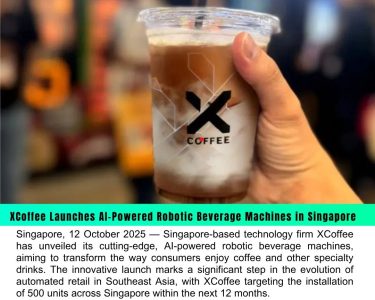In a bold move that blends culinary culture with automotive innovation, China’s electric vehicle manufacturer Zeekr has reimagined the conventional minivan by transforming it into a mobile hotpot space. This intriguing concept has captured the attention of viewers across social media, particularly on Weibo, where the video showcasing this unique feature garnered nearly a million views. The idea of enjoying a hotpot meal while on the go has sparked debates about practicality and creativity in modern vehicle design.
Zeekr, a subsidiary of Geely, is known for pushing the boundaries of electric vehicle technology and design. The company’s latest innovation reflects a growing trend in the automotive industry—creating multifunctional spaces that cater to the diverse lifestyles of consumers. By integrating a hotpot cooking facility into a minivan, Zeekr is not only offering a unique dining experience but also catering to the social aspect of dining that is deeply ingrained in Chinese culture.
The in-car hotpot space features specially designed compartments that house cooking equipment, ingredients, and seating arrangements. This allows passengers to prepare and enjoy their meals comfortably while on the road. The concept capitalizes on the popularity of hotpot in China, where sharing a meal with friends and family is a cherished social activity. The allure of dining in a mobile setting adds an exciting twist to traditional dining experiences.
However, the practicality of eating hotpot in a confined space has led to mixed reactions among viewers. Some have lauded the innovative idea, emphasizing the fun and camaraderie that comes with shared meals, even while traveling. They argue that the convenience of preparing a hotpot meal during long journeys could enhance family road trips or outings with friends, creating memorable experiences along the way.
On the flip side, many viewers have expressed skepticism about the feasibility of this concept. Concerns have been raised about the limited space available in a minivan, questioning whether passengers could comfortably cook and eat without making a mess. Additionally, there are concerns about safety and hygiene, especially when handling hot cooking equipment in a moving vehicle. The potential for spills and accidents, particularly with boiling broth and ingredients, has been a focal point in these discussions.
The debate reflects a broader conversation about the evolving role of vehicles in our daily lives. As people seek more flexible and multifunctional spaces, automakers are challenged to innovate beyond traditional transportation. The Zeekr hotpot minivan is an embodiment of this shift, showcasing how vehicles can serve as dynamic environments that cater to various activities—be it dining, working, or leisure.
Moreover, this innovation aligns with the growing trend of experiential consumption, where consumers prioritize unique and memorable experiences over traditional products. The hotpot minivan could appeal particularly to younger generations who value social interactions and creative experiences. For them, the idea of cooking and dining in a car could represent a novel way to enjoy road trips and gatherings.
In conclusion, Zeekr’s transformation of a minivan into an in-car hotpot space is a fascinating blend of culture, technology, and design. While it has sparked lively debates about practicality, it undeniably pushes the boundaries of what vehicles can offer. As the automotive industry continues to evolve, innovations like these could pave the way for more multifunctional vehicles that cater to the diverse and changing needs of consumers. Whether this concept will take off in the market remains to be seen, but it certainly adds a flavorful twist to the conversation around modern mobility.





